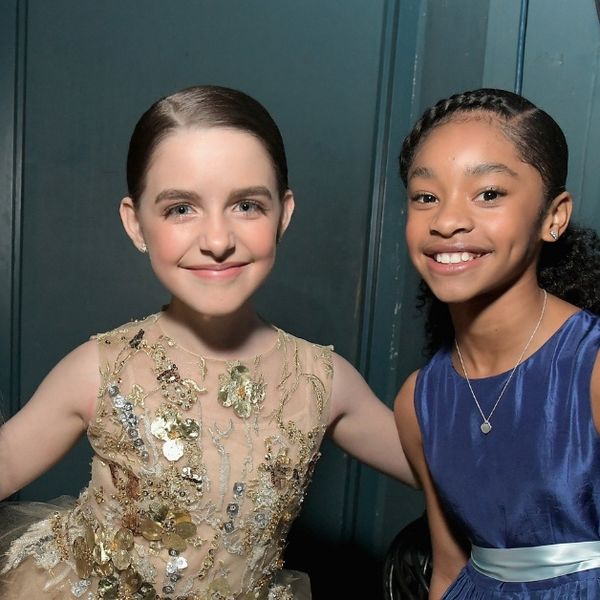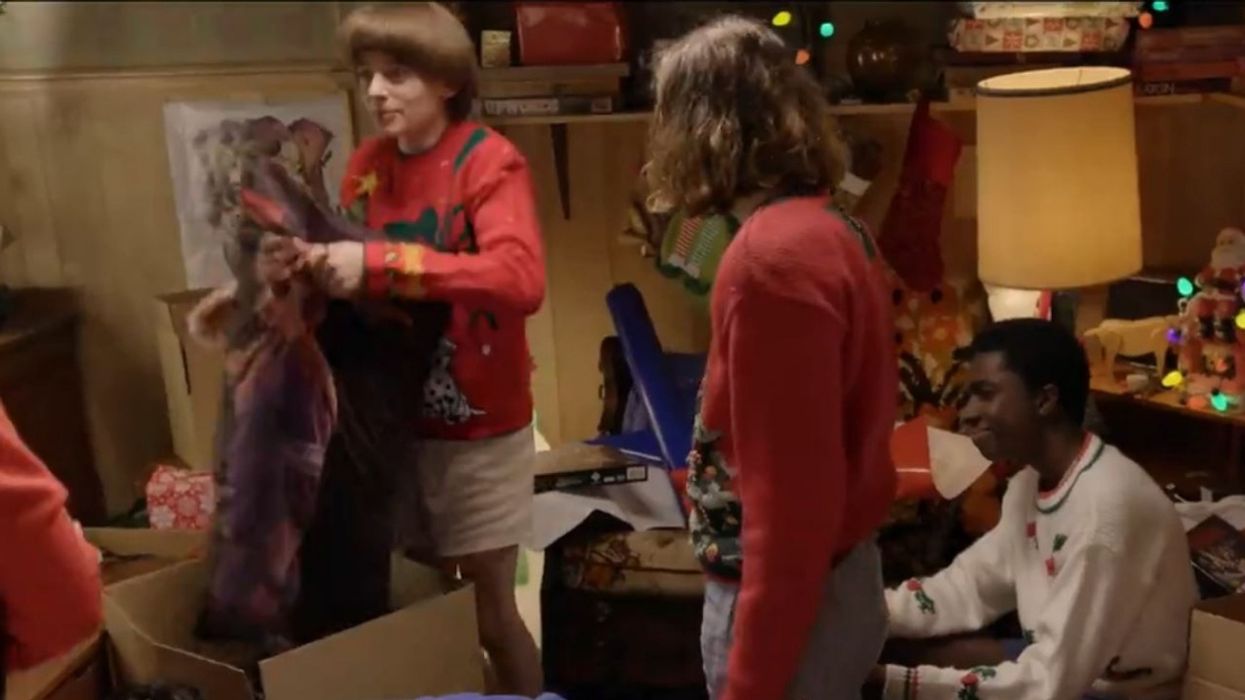December, 2000, OSAKA, Japan - A trip to Japan is like a continuous time warp back and forth through history, from the past to the cutting-edge present, then back to the ancient. My mission was history based. The international opening of the Japanese American National Museum's traveling exhibit on the history of the Japanese Americans of Hawaii at the Okinawa Prefectural Museum in Okinawa, Japan.
My arrival in Japan was at Kansai International Airport, a stunningly contemporary facility built on a vast man-made island in Osaka Bay. The Japanese flair for efficiency and design, rationality melded with style, made the normally punishing process of an international transit a smooth, in fact, pleasurable, experience. We sailed through customs, exchanged our dollars for yen, had a tasty light snack of buckwheat noodles all in stylish comfort, and we were on our way to our destination, Okinawa.
The opening of the museum's exhibit was a great success. A large contingent of museum supporters and staff were in attendance, including Irene Hirano, the museum's president and executive director. U.S. Ambassador to Japan, Thomas Foley, U.S. Senator from Hawaii, Daniel Inouye, Lt. Governor of Hawaii, Mazie Hirono, and Governor Inamine of Okinawa were our honored guests together with more than 250 other Americans who had traveled to be with us for the opening. As the only American to speak at the ceremony in both Japanese and English, I became something of the bridge to mutual understanding that is the point of our exhibit.
The following day was back to the future. The museum sponsored a special educational program at the National Okinawa Youth Center on Tokashiki Island, a fast jetfoil ride away from the main island. The program featured two astronauts from NASA, Daniel Tani, a Japanese American from Chicago, and Mamoru Mohri, a Japanese astronaut who has flown two NASA space missions in the past two years. The program had the eyes and imagination of the young people of Okinawa soaring to the stars.
From Okinawa, I flew to the southern Japan city of Fukuoka because of my personal interest in architecture. I had read that American architect Jon Jerde had designed a remarkable project in Fukuoka called Canal City. Remarkable it is! Jerde has designed a fancifully futuristic commercial complex incorporating one of the many canals of Fukuoka. There are restaurants and shops galore, offices and educational facilities and a dazzling multiplex cinema and a grand theater for Broadway musicals - indeed a traveling production of Disney's "Lion King" was the next production booked. Whimsically geometric structures snake and undulate following the curves of the canal. The canal itself spouted jets of water five stories up. Lights bubbled and flickered or glowed and subtly illuminated the contours of the fanciful buildings. There were performers on little peninsulas out on the canal. But the cascade of people flowing up and down the escalators and stairways made simple people watching just as entertaining. Jerde's creation is an architectural Broadway musical. And my actor's instincts led me to book my hotel reservation at the Hyatt Grand right smack center stage in the middle of the whole colorful production. I lived for two days and two nights in an architect's theatrical fantasy.
Then a super-fast bullet train sped me right back into history. When it stopped, we transferred to an old-fashioned ferry that sailed leisurely toward the legendary shrine island of Miyajima shrouded in the mist of history. As a matter of fact, there was a light mist in the air as we approached the famous floating torii gate to Itsukushima Shrine that seems to mystically rest on water. Legend has it that because the island is considered sacred, there were no births or deaths allowed on it. That all had to take place on the mainland. Even today, there is no hospital on the island. However, at the ferry station, we did take a taxi, instead of the rickshaw, to our lodging. As we were driven through the narrow passageways of the village of Miyajima, it felt as though we were passing through the set of a samurai movie. A short way up the hillside and we arrived at a magnificent Japanese villa. This was the historic Iwaso Inn, one of the great lodges of Japan. We were gracefully ushered by a charming kimono-clad chambermaid to a classically formal Japanese room. Beyond the veranda lay a serene view of a maple forest. I could have sat meditating on that veranda all day. But we had so much we wanted to do.
It was autumn and the forest had turned a spectacular palette of reds, oranges, and yellows as well as the deep greens of the evergreens. We took a cable ride high over the spectacularly painted forest to the topmost point of the island. We fed the famously hungry tame deers that roam the island of Miyajima. We trooped through the shrine with the day-tripping tourist horde. Exhausted, we returned to our inn. I soaked in the hot Japanese bath gazing up at the steam wafting through the pine branches. Every tired muscle in my body seemed to melt into blessed relaxation.
Shortly after I had changed into my formal kimono provided by the inn, a gentle knock came on our sliding door. Our chambermaid was ready to serve us dinner. The low, spacious lacquered table in our room became the stage for a seemingly endless parade of small, artfully arranged dishes presented with elegance and grace. This was the renowned "kaiseki" dinner of ancient Japan. When the last delicious morsel had been served, the chambermaid suggested that we go for an after dinner stroll on the island. Miyajima at night, she urged, is something quite special.
She was so right. The island was magically transformed. The hurly burly of the day-trippers had disappeared and in its place was a tranquil scene of kimono-clad people quietly admiring the illuminated shrine and pagoda. The reflection of the shrine on the calm, dark water made it seem almost supernatural. On our way back, we ambled past the detached villa of our inn that was reserved for the emperor. Emperor Hirohito himself, we were told, had regularly stayed there. When we returned to our room, the lacquered table had vanished and in its place futon beds had neatly been arranged. That night, I slept deeply dreaming the dream of some past emperor.
Another quick bullet train ride the next day and we were in the shining new metropolis of Hiroshima. This city, flattened by the devastation of the atomic bomb over half a century ago, has rebuilt itself into a modern urban center of broad, tree-lined boulevards, tall glassy buildings and, at its focal point, a leafy park dedicated to international peace, the center of which is the Peace Museum. The exhibit there is a deeply moving chronicle of the human suffering as a result of the dropping of the bomb.
In Hiroshima, I was back to wearing my hat as the chairman of the Japanese American National Museum. After Okinawa, we want to tour our exhibit throughout Japan. It is currently set for Osaka in March of 2001. Because a large number of Japanese immigrants came from Hiroshima, as indeed my maternal grandparents did, we would very much like to see our exhibit visit there. I had met Governor Yuzan Fujita of Hiroshima on a previous visit and so had arranged to meet with him again to gain his support and guidance finding a way to get our exhibit to Hiroshima. The Governor greeted me warmly and, after I made my request, he immediately had ideas of a venue to be considered. He called for his personal car and driver and promptly dispatched me to examine his suggested site. Transported in the luxurious comfort of the Governor's car, I toured a handsome new exhibition hall. I now feel rather confident that the people of Hiroshima will be viewing our exhibit.
After visits with relatives in Hiroshima, I was back on the bullet train for my final stop on this trip, Osaka. The Second City of Japan is an overwhelming metropolis of congested traffic, bustling commerce and energetic people. And this is where the popularity of Star Trek in Japan is enormous. Through Russ Haslage of the Excelsior campaign, fans in Osaka had contacted me, and a charming young lady, Sachie Kubo, had made arrangements, to show me their city.
When I checked into my hotel room, the view that greeted me through my window was of the great Osaka Castle, the most spectacular historic structure in Japan. Circled by a wide moat protecting a lush park-like area, then looming up on a base of gigantic boulders amazingly fitted together, the castle sparkled in the sun with its golden embellishments. I had to go across immediately to tour it.
Crossing the arched bridge over the moat felt like the prelude to entry into the past. This was the very place where great battles were fought by the most powerful shogun in Japan's history, Toyotomi Hideyoshi. Stepping into this storied precinct, I felt as though I were going back in time. That illusion was immediately smashed when a trendy young runner jogged by wearing a shiny spandex running outfit, then another wearing earphones with a thin metallic antenna bobbing over his head. I learned that the park inside the moat was one of the popular running paths of Osaka. As I walked through the outer entrance of the castle and the gigantic wood gate studded with black iron braces, I recognized it immediately from the television mini-epic, "Shogun." I remembered that this was where it was filmed on location. We trudged up a seemingly endless series of gray granite steps to the castle's main entrance. As we huffed and puffed, our straining muscles let us know how impregnable this castle must have been to the warlords who attacked it. We paid our admission and walked in. I stood there stunned. In front of us was a bank of elevators! There were video displays on the history of the castle built right into the walls! And I felt the comforting warmth of forced air heating in this ancient castle! I learned from a brochure that this historic castle had been completely rebuilt just a few years ago -- with all modern conveniences to boot. With a slight sense of disillusionment, we took the elevator to the top of the castle. The view was great. We were taking in the panoramic vista of modern day Osaka from the highest point of the castle, when I heard an American accented voice shout at me, "My god! You're Mr. Sulu, aren't you?" With one excited exclamation, I was brought from my fantasies at the pinnacle of this recently rebuilt ancient castle, back to my very own present day reality. The cameras flashed as I posed for pictures with American Star Trek fans touring in Osaka.
I spent the following day with Japanese Star Trek fans in Osaka. Four beaming faces were waiting in the hotel lobby that morning to show me the sights of this city. Sachie Kubo and Masanori Mizuumi were from Osaka but I was both flattered and moved to discover that Yoshimitsu Murata and Youichi Nieda, whom I had met on a previous trip to Tokyo earlier this year, had traveled all the way down from Tokyo to share the day with me.
It was a fun-filled day of roaming through a vibrant and engaging metropolis of busy marketplaces and elegant shops, raucous entertainment quarters and traditional bunraku theater and temples and shrines. We even saw a traditional wedding ceremony taking place at one of the temples. That evening, about a dozen more fans joined us at a restaurant for a lovely dinner of Japanese hot pot and conversations about the Excelsior campaign. The savory steam that wafted up from the bubbling pot of vegetables, seafood, noodles and other delicious morsels seemed to warm new friendships and enhance old ones.
All to soon, our 10-day trip to Japan was coming to an end. The next afternoon, we were on the express train to Kansai International Airport for our flight to Los Angeles - home to prepare for the holidays. As I write this on my laptop in the airport lounge in Osaka, I'm reminded of the many events of this past year. Much has happened, great and small. We have much to be thankful for. And much we need to do in the future. May I wish you all the joys and blessings of this holiday season.
People Are Roasting Trump Over His Mind-Numbing Observation About The Wetness Of Water 😂
Donald Trump thanked the first responders who came to the aid of victims of Hurricane Florence. The storm devastated portions of North Carolina, dumping massive amounts of rain and damaging millions of dollars in property. Many natural areas were destroyed, some farmers lost everything and more than a few people have been left homeless. The first responders after this massive storm were literal life savers, and Trump was absolutely right to thank them. Unfortunately, the sentiment of his message was lost for many people because he didn't seem to put any effort or preparation into what he was saying. Then, in the middle of his off-the-cuff message, he confused everyone by talking about the wetness of water.
As Trump described the storm and the importance of first responders he told the world:
This is a tough hurricane, one of the wettest we've ever seen from the standpoint of water. Rarely have we had an experience like it and it certainly is not good.
The Tweet went out in the middle of the day on Tuesday, September 18th. At the time of this article, it hasn't even been up for 24 hours and already has over 13,000 comments. Many of them pointed out how Trump didn't even seem to try...
and how asinine his description was.
We don't know if Trump will continue to address the public by releasing these kinds of videos, or if they will continue to be as unrehearsed as this one is. We assure you, if they are, Twitter will have plenty to say about it.
H/T: Huffington Post, Twitter
Michael C. Hall Is Starring In A One-Night-Only Broadway Musical About Skittles—And No, We're Not Making This Up

Super Bowl Sunday: it's the only time when commercials are more popular than the show they interrupt. However, this year's best ad might not even be on TV.
Funny, irreverent, and sometimes controversial, Super Bowl ads have become as much of an event as the big game itself. Even those who don't watch football will tune in and watch as brands fight it out for the most talked about commercial of the year.
For advertisers though, getting your ad in front of one of the largest television audiences out there doesn't come cheap. A 30-second spot for this year could cost up to $5 million!
Candy maker Skittles decided to skip the Super Bowl and head for Broadway. For one-night-only, Skittles The Musical will appear on Broadway starring everyone's favorite serial killer, Dexter actor Michael C. Hall. No, we're not kidding.
The concept has so many people scratching their heads that Skittles needed to make another ad just to explain it.
Skittles The Musical ))) Starring Michael C. Hallwww.youtube.com
Anxious over appearing in the musical Hall sits down with a therapist, who like the rest of us is not exactly sure what it is. Hall explains the 30 minute advertisement is a real musical, you even have to buy tickets to go see it.
At one point Skittles even takes a self-deprecating jab at themselves and Hall, implying the musical is a terrible career decision.
After all, who is going to pay $207 a ticket to go see a 30 minute advertisement for Skittles?
A whole lot of people apparently
Tickets to the performance at the Town Hall theater in New York are almost sold out. People may not know what's going on, but they are ready to taste the rainbow.
@Skittles I’m ready! Purchased my tickets #SkittlesTheMusical— Corey (@Corey) 1548091647.0
@playbill @Skittles https://t.co/uo9aLkDV2f— robbie. (@robbie.) 1548135341.0
@playbill @Skittles My mind is blown and my heart is warmed. How fun! “Broadway the rainbow” indeed ❤️🧡💛💚💙💜— Allison Wonderland (@Allison Wonderland) 1548185407.0
If someone takes me to see skittles the musical I'll love them forever.— ☆Bambi☆ (@☆Bambi☆) 1548218569.0
On its surface Skittles The Musical may just look like an over the top gag from a brand known for its unusual marketing, but Skittles recruited some serious Broadway talent to put it together including playwright Will Eno and a cast straight from some of the biggest shows on Broadway.
According to Skittles the show will take "an absurdly self-reflective look at consumerism and the ever-increasing pervasiveness of brand advertising in our lives."
And if that wasn't enough Skittles will also be donating all the proceeds from the show to Broadway Cares/Equity Fights AIDS. Skittles parent company will match that donation up to $50,000. You had our attention Skittles, now you have our interest.
Wait so rather than spend a bucket load of 💰to take out a 30sec ad during the SuperBowl, @Skittles will present a L… https://t.co/OVnNQfQ506— Christopher D. Clegg (@Christopher D. Clegg) 1548096836.0
@cadimy @playbill @Skittles If you read the article, it addresses that they're doing a short show in lieu of a supe… https://t.co/3Hxm2lNLyI— a dope ghost (@a dope ghost) 1548094203.0
@lnternetqueer @playbill @Skittles well that's quite neat!— 🦇 (@🦇) 1548094980.0
There is no telling how a commercial/Broadway musical from the bizarre minds over at Skittles will turn out, but it's guaranteed to be an performace like Broadway has never seen before.
The Kids From 'Stranger Things' Wrapped Presents For Superfans—And Did A Delightfully Terrible Job 😂
When it comes to giving gifts, not all celebrities are as crafty as Taylor Swift, but that didn't stop the adorable stars of Netflix's Stranger Things from giving it a try.
In a recently released video from Netflix, actors Millie, Finn, Noah, Caleb, Gaten, and Sadie got together for some holiday cheer and to wrap gifts for fans. But kids will be kids, even if they star in a hit television show. Watch as chaos ensues.
Fans loved every moment, even if the kids weren't the greatest wrappers.
@Stranger_Things I love seeing them mess around with each other.— Abby! (@Abby!) 1545318707.0
@doublejoywilson https://t.co/qgFgkZpTxQ— Stranger Things (@Stranger Things) 1545318849.0
@realrevella https://t.co/G5Er8pydg5— Stranger Things (@Stranger Things) 1545318801.0
@themallratss we do what we can https://t.co/POBMVbXfZS— Stranger Things (@Stranger Things) 1545319099.0
@Stranger_Things They’re a cute mess 😂— Janet ⁷✜🪐 (@Janet ⁷✜🪐) 1545318854.0
@minseokjin94 https://t.co/Dr4Y4xFYyM— Stranger Things (@Stranger Things) 1545318939.0
@Stranger_Things Thanks for the gif...they’re a MESS mess https://t.co/cG5ODdPDf0— Janet ⁷✜🪐 (@Janet ⁷✜🪐) 1545319571.0
@pvladins AH THE SOUND OF HOLIDAY CHEER— Stranger Things (@Stranger Things) 1545318737.0
@Stranger_Things HAPPY HOLYDAYS TO THE DEMOGORGON https://t.co/BpB1ZixUK5— 𝑣𝑎𝑙 ⚯͛ (@𝑣𝑎𝑙 ⚯͛) 1545318680.0
@edwardistheman @netflix ok here https://t.co/UwOLIa1T1C— Stranger Things (@Stranger Things) 1545318880.0
We just can't get enough of these talented kids!
High School Administration Under Fire For Breaking Into A Bathroom Stall While Transgender Student Was Using It
Cece is a 16-year-old transgender girl from Maple Grove, Minnesota.
She is a student at Osseo Senior High School and recently had a traumatic experience at school.
On Wednesday, Cece posted two videos, one of which is very disturbing, to her Facebook regarding an incident she experienced.
While Cece was using the bathroom at school, staff forced their way into the stall she was in.
Again, Cece is 16 years old.
Her post reads:
"SCHOOL OSSEO SEINOR HIGH 🚨
I Guess I Can't Use The Girls Bathroom Just Because I'm Transgender 😔 Share This & MAKE IT GO VIRAL ‼️ I Been Violating By Principal and Admin and Hallmonters
This Was Today 11/28/18 🕚 Ms Smith Had Nothing To Do With This"
One video showed all of the school officials she wanted to publicly name who participated in the incident.
The other showed the actual incident.
Cece's self-recorded video shows her sitting on the toilet with her pants down while a school official uses a makeshift device to reach over the stall to unlock the door.
A spokesperson for Osseo Schools stated:
"Social media posts are significantly misrepresenting the incident and that staff works very hard every day to help ensure an inclusive school where all students feel welcome, respected and safe."
They refused to comment further saying:
"We wish we could provide additional details about this incident but are committed to protecting the student's right to data privacy."
Some reports claim that Cece had previously been told not to use the women's restroom.
However, in 2017 the Minnesota Department of Education (MDOE) ruled in favor of students like Cece.
MDOE guidance states:
"Transgender and gender nonconforming students should be afforded the opportunity to use the restroom of their choice."
People also can not help but note the fact that at age 16, Cece is a minor.
Adults forcing themselves into her stall while she used the bathroom is even more appalling.

Look, guys, when a kid is in the bathroom stall with their pants down, and you pry open the stall, exposing them to… https://t.co/rzMktZEkEB— Thomas Page (@Thomas Page) 1543690840
This should be sexual assault assault of a minor. Anyone involved should IMMEDIATELY be relieved from their positio… https://t.co/M5ByUSBvBP— CrystalshineMarie (@CrystalshineMarie) 1543626160
Regardless of the unknown circumstances, the internet is outraged over the adult school staff's actions.
1st thing I saw this AM & now I can’t stop thinking about it. Unless she was assaulting another student, there is… https://t.co/nkeudm8mAN— BadAssGrandma (@BadAssGrandma) 1543679009
Transphobic adults literally busted the bathroom door open on a trans high school student today in Minnesota bc the… https://t.co/rojArsFW9Q— mother sister (@mother sister) 1543465561
Look at the face of the woman who has unlocked the bathroom door!Arrogant assholes https://t.co/X98JSgHgMx— Teresa Culhane (@Teresa Culhane) 1543698568
Cece's video and story has indeed gone viral. But what happens now remains to be seen.
H/T: Pink News, Facebook, Daily Dot, Bring Me The News

















